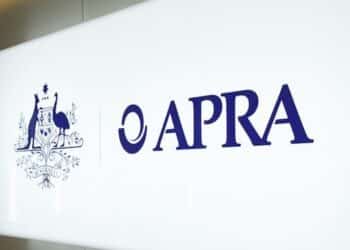Currently the super guarantee sits at 9.5 per cent. It will increase by 50 basis points annually from 2021 until it reaches 12 per cent in 2027.
Although the increase from 9.5 per cent to 12 per cent has already been legislated, debate about super contributions first kicked off when Liberal backbenchers pushed for the guarantee to be frozen at its current level last year.
Treasurer Josh Frydenberg rejected the disputes, saying the increase would go ahead.
But the debate has been fired up again by a new paper written by researchers Geoff Warren, Gaurav Khemka and Yifu Tang from the Australian National University’s College of Business and Economics, which has concluded there is no optimal superannuation guarantee across income levels.
They have stated their findings are at odds with a strong belief that increasing the SG is “essential to ensure adequacy during retirement”.
“Our results suggest that an increase in the SG might be justified if the policy objective involves either replacing the age pension, or requiring members to self-insure against various risks,” the report stated.
“We caution that setting the SG so that members self-insure gives rise [that] might result in over-saving if the risks do not come to fruition, with its own potential issues and costs. We raise the point that there may be other solutions for insuring against risks related to social security and pooling, rather than relying on the SG.”
Industry Super Australia chief executive Bernie Dean has criticised the research based on life-modelling, saying it has “no benchmarks to reality” and is “flawed and misleading”.
“In this fantasy world women and children don’t exist and it assumes all men work continuously for more than 40 years and have no assets outside of super,” Mr Dean said.
“It draws dangerous conclusions – if implemented, millions of Australians would be left struggling to make ends meet on the pension, or forced to work until they drop.”
The association added that the paper has not factored for casual or part-time work as well as forgetting unpaid super.
The researchers have admitted their analysis scope is limited, but Industry Super has stated it is “so limited that no meaningful conclusions could be drawn from it”, urging policymakers to ignore its “dangerous recommendations” which would lead to more Australians relying on the pension.
The association added further issues with the study, including everything being indexed by the same percentage, there being no test of whether any assumptions hold in history or that the balances produced by the model benchmark to reality.
The paper has optimised for the replacement rate of the first five years of retirement to the five years of working life when it has the lowest wage, Industry Super says, insisting it is not reflective of what happens in reality and generates biased results.
And while some have argued for the SG to stay constant, former ACTU secretary and cofounder of the superannuation system, Bill Kelty, along with former Liberal Party leader John Hewson hit back last year, arguing the SG should be even higher than 12 per cent, instead pushing for 15.
In particular, Mr Kelty noted “not one person” in the Morrison government had mentioned touching the guarantee before the federal election in 2019, declaring “do what you told people you would do, implement the 12 per cent”.




I agree with the ANU research. I work with a lot of younger clients, who have been benefiting from the higher level of SG (not the original 4% back in the early 90s) and when I project forward to see what their balances are likely to be at retirement, I almost always fee a figure which will provide a comfortable retirement (after allowing for inflation). As long as these young superannuants don’t stuff things up by doing silly things with their super, they will be fine. That’s where financial planners do their best work – acting as a barrier to protect consumers from stupid mistakes and scams. What young people need, and want from Government, is to take serious action on house prices. The Government needs to step in and ensure there is a balance between supply and demand, as the vast majority have no hope in hell of ever buying their own home. That includes many high income earning youngsters.
Buying your first home has always been difficult. I see young people (that is less than 30), spending an exorbitant amount on overseas trips, fancy clothes and dare I say it – smashed avo breakfasts. Here is my tip – stop spending and start saving. It’s possible.
It’s difficult for advisers to make comments that aren’t going to be seen as biased, given our interests are served by having more SG than less, BUT the super guarantee must go to at least 12% for it to be effective for the next generation who have not had the benefits of $1million additional non-concessional contributions nor the $150k pa of previous days. Employers will push back against any additional costs – as always – but while we collect so little in taxes (often as a result of our good work in planning to minimise tax for our clients!) we can’t expect that Age Pensions will be affordable for almost all, as they had been until recently. Taxes should be higher, but good luck getting elected on that platform…so SG and other social security measures will need to step up, given our demographics over the next 3-4 decades will create a shrinking pool of taxpayers.